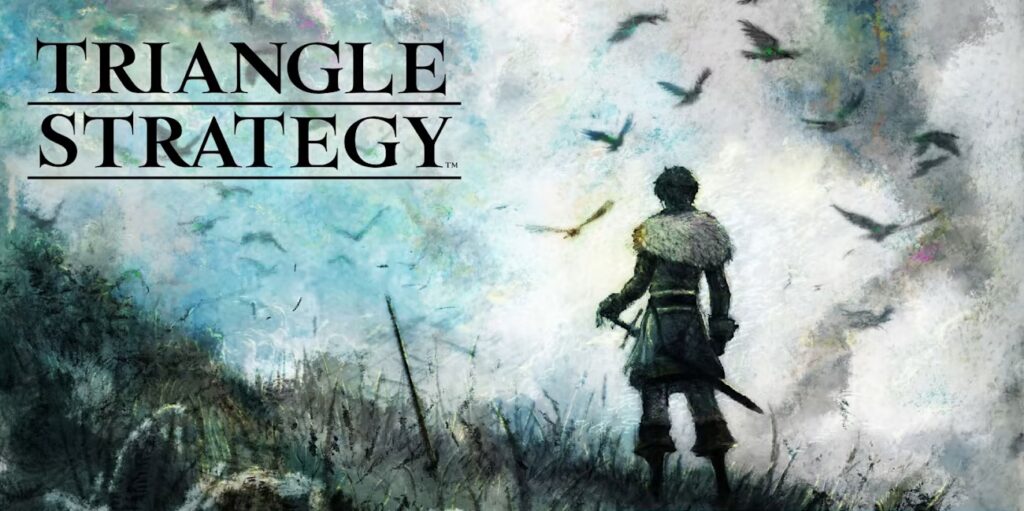
As one of the most hotly anticipated IPs in some time from Square Enix and Nintendo, Triangle Strategy, the new SRPG from Artdink, has a lot to live up to. Brandishing the 2D/3D engine previously used by Octopath Traveler, Triangle Strategy has been tops on RPG and strategy gamer lists since its initial announcement and teaser demo. Now that it’s here, the frenzy has abated and it’s time to take a serious look at this throwback strategy game.
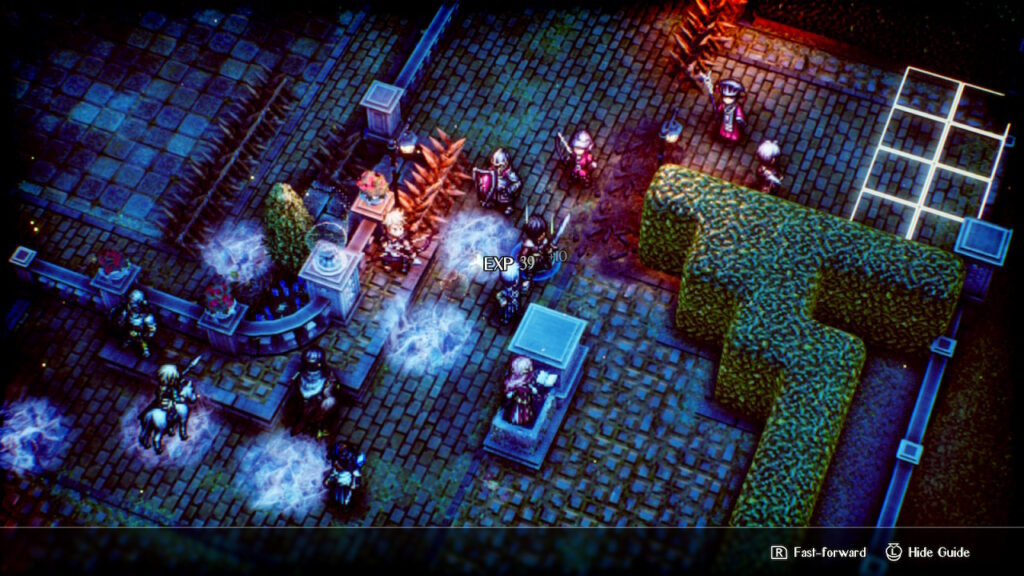
Naturally, initial comparisons of Triangle Strategy trend towards Final Fantasy Tactics and Tactics Ogre. But those comparisons are noticeably focused on the combat and there’s a bit more going on here. Triangle Strategy takes the isometric SRPG format and expands the plot portions heavily, with more focus on what’s happening than actually stopping it. You control Lord Serenoa, the young leader of House Wolfort whose family is in service to the king of Glenbrook. This is a kingdom with enemy/allies on two sides and they form a ‘triangle’ (clever, right?) which was the basis for the Saltiron War, fought predictably over the salt that the desert kingdom of Hyzante has exclusive dominion over and the iron of icy Aesfrost. Glenbrook has fertile farmlands and supplies the other two kingdoms in a mutually beneficial relationship. Predictably, things aren’t so rosy between the three powers and your place is with Serenoa and his companions while they sort out the political machinations of opposing empires as slaughter ensues.
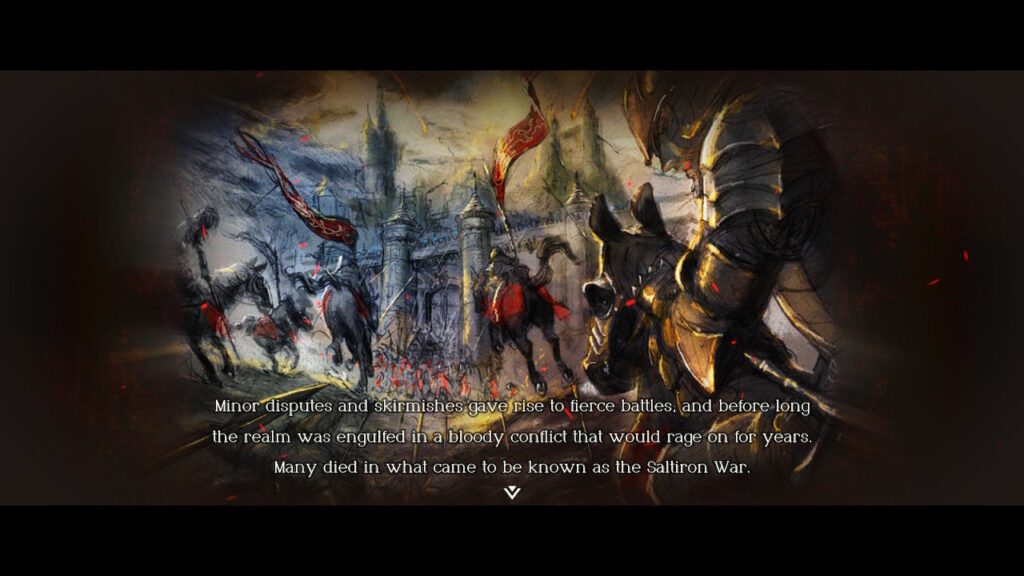
If the plot of Triangle Strategy sounds complex, it is and it isn’t. While there’s a great deal of detail, there’s not all that much depth behind it. You see behind the curtain most of the time, watching enemy leaders plot against you in excruciatingly long story sequences and chapters are driven by a wide variety of detail including politics of picking appropriate wedding dresses for the high-born depending on their racial standing. There’s a lot of content here like that, pushing to show the unfairness of discrimination, showing the evil of greed and power over the oppressed, and trying to upend status quos here and there. Unfortunately, as much as Triangle Strategy builds up the backstory of the continent of Norzelia, it’s all a bit tedious. The overall feeling is more like a high fantasy novel with the strategy game tacked on than it is a strategy game with a deep and compelling story.
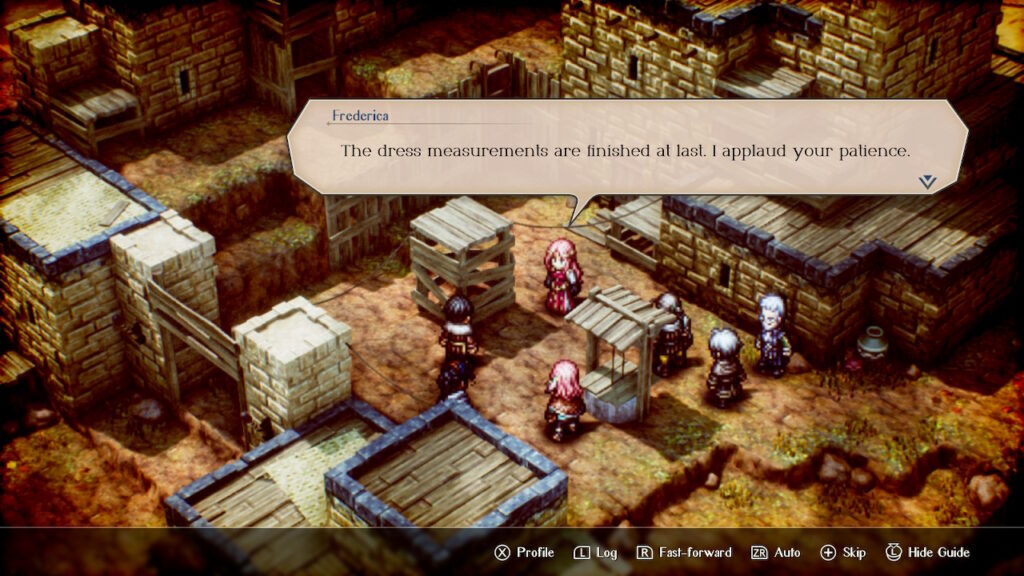
Waiting up to 30 minutes or more between battles while you listen to the characters banter endlessly to set up the battle you’re undoubtedly about to fight at some point gets old. It gets old fast too. The game immediately tells you about side stories you can start to explore, side characters you’ll collect and a variety of other features that you won’t get to experience for at least 5-6 hours after starting Triangle Strategy (unless you skip all the dialogue). It’s a slow burn made even slower by the glacial introduction of useful powers, higher hit points, unique items and the tedious levelling system that you can only access bits and pieces of for the first, oh, 5 or six chapters. By that point though, you’re actively questioning your life choices.
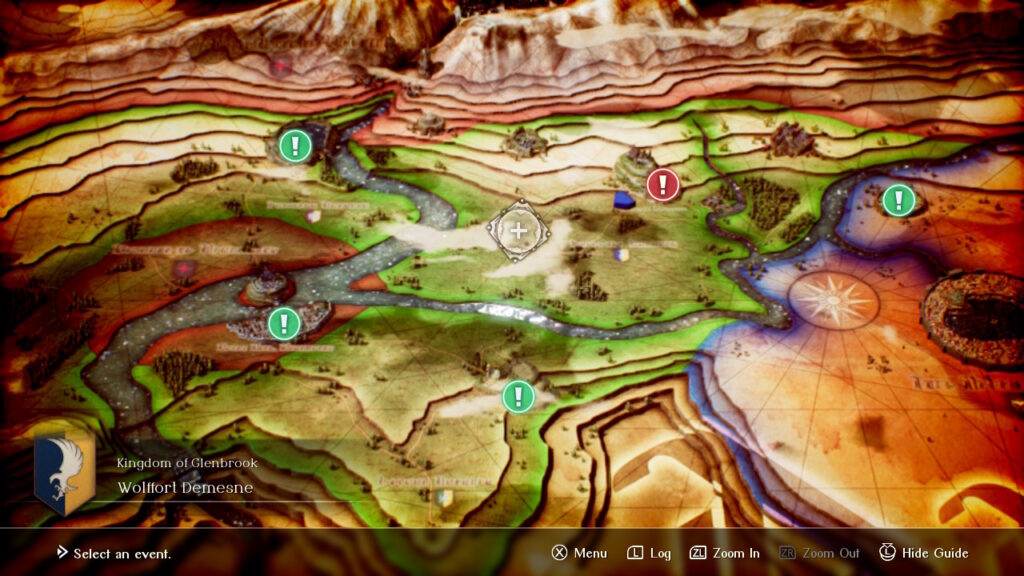
All this is not to say that Triangle Strategy is bad. It’s not. It’s a great game with ridiculously bad pacing issues. The plot isn’t boring, but it’s just too slow. The gameplay on the other hand, is absolutely excellent when you can finally get there. Combat scenarios average about an hour per fight and leave you on a closed terrain-filled battlefield which is fully rotatable. You have static placement squares but can move characters to different starting points within the squares, allowing for tactical customization. Each fight has a goal, whether it’s to escape, protect characters, or just slaughter every opponent. Within those goals, it’s entirely up to you what to do to accomplish your task. In the beginning, you’re more than a bit underpowered and it’s a struggle to survive. But don’t sweat it, this isn’t Fire Emblem. “Death, but not for you Gunslinger” and all that. There’s no permadeath in Triangle Strategy and any defeated characters leave your fighting force weaker but not permanently impacted. Next fight, they’re right back with you once more.
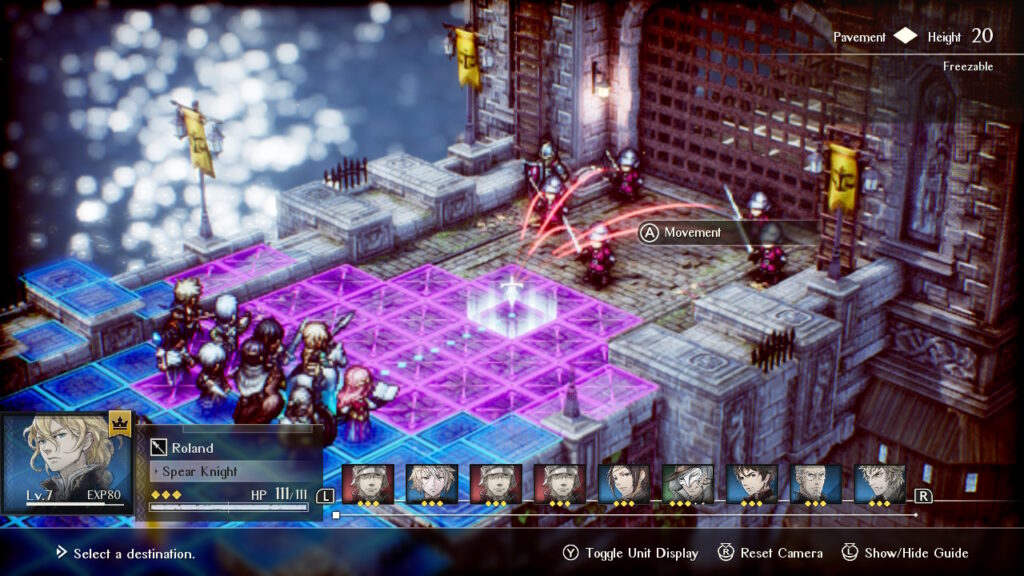
Actual combat is a bit more interesting though. Your force is roughly equivalent to the enemy forces as long as you’ve been thorough and you can muddle through without heavy planning. Backstabs and flank attacks do significant damage to both your allies and enemies and getting surrounded is a terrible idea, but the terrain effects are unique and interesting here. For example, you can use a fire attack to melt ice and then shoot lightning into it, electrifying the enemy as they approach stupidly through the electric puddle.
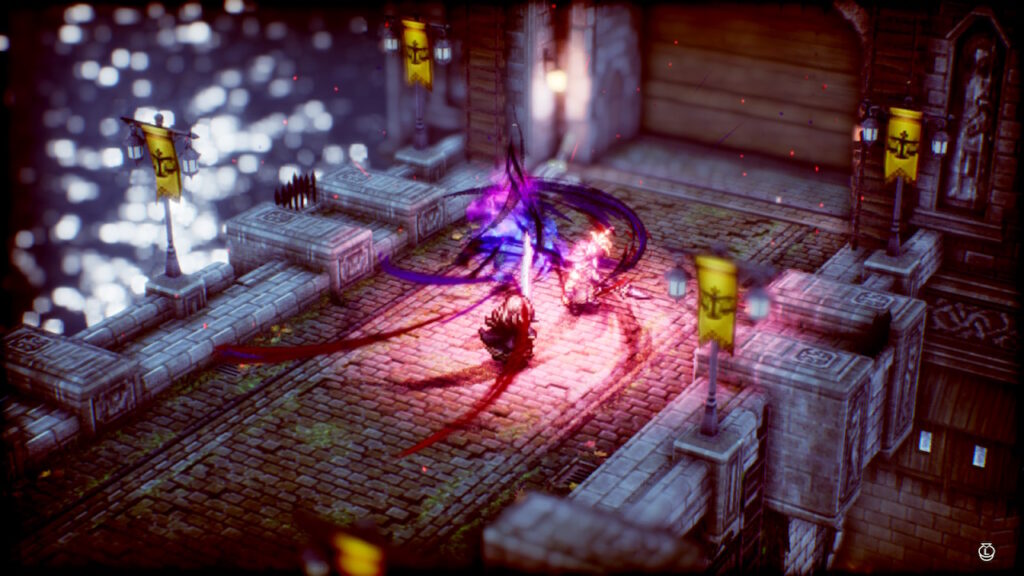
The AI is weak here on normal mode, which seems like a bit of an oversight. Enemies simply make bad tactical decisions and as long as you’re not asleep at the wheel, you can thwart most of their pushes and pick away at their fringes until the bulk of their forces are sufficiently weakened. Granted, that’s hard to do in a timed level (which counts down to zero with every character’s moves), but for the most part you can leisurely dance about the enemies, healing your forces easily as you go. The terrain effects are neat though, and you get bonuses for using height advantages and other tactical mainstays. These take the form of “Kudos” which are points you can spend to buy extended abilities at your encampment.
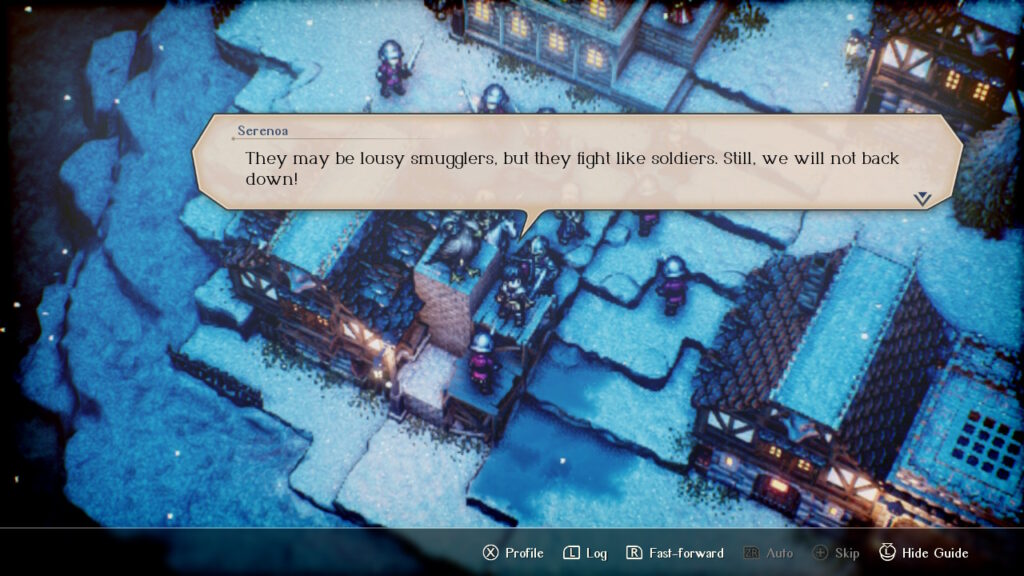
You use three kinds of points during gameplay. The standard hit points are naturally present, as are technical points, the magic points of the game which build up through regular actions and can be spent on special abilities for each character. Finally there are Quietus points which allow you to activate specialized power abilities which must be purchased through the encampment. TP abilities build as you level up and you’ll eventually be able to do a fair bit of damage and use each ability to maximum advantage, but like everything else in Triangle Strategy, it’s a slow process and feels a bit repetitive at first. To be honest, the game really doesn’t pick up until a good third of the way through and by then you’ve likely got around 8 hours of gameplay and storyline in. That’s a long time to wait.
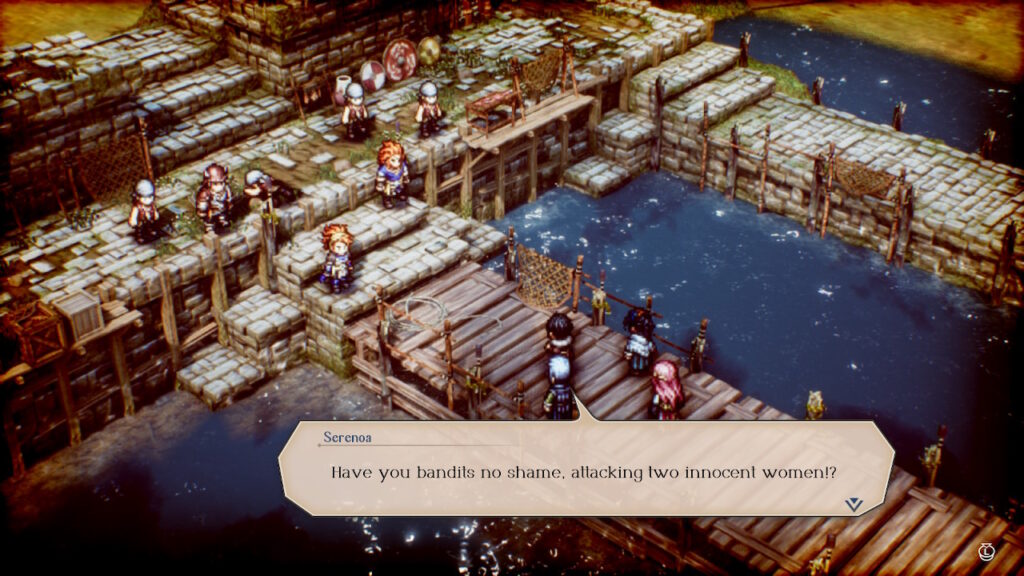
The encampment is the other main part of the game. Within your giant tent (which apparently just follows you everywhere since you’re the lord of the demesne, there’s a smithy that can improve your armor, a shop, a wise man that trades abilities and job ranks for kudos, and even a bar that offers training scenarios which help you grind to achieve minimum levels for main story combat. Within the encampment, you can spend resources and gold to improve the weapons of your characters. Each character has unique abilities rather than a group of classes like cavalry, infantry and bowmen. While those are all present, the individuality helps make characters in Triangle Strategy shine. In fact, each character even has their own hand-drawn portrait with background explanations of who they are in case you get lost in the complex back-and-forth of the plot line. Artdink even went so far as to put younger portraits for places where the story uses flashback as a storytelling device, a pretty cool inclusion.
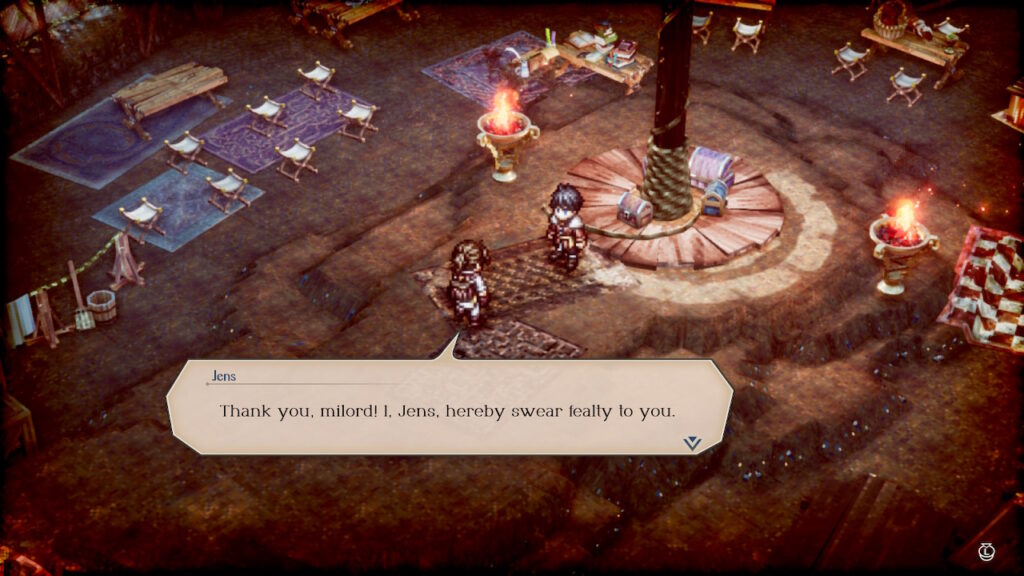
After buying your upgrades, fighting mock battles, and picking up items and accessories to fully equip your characters, it’s time to get back to the gameplay. Some sections of the game also include an exploration segment that allows you to talk to local townsfolk in various areas. Talk to enough folks and you’ll learn key things that will allow you to affect other aspects of gameplay such as the voting. Voting consists of consulting your key characters to determine where the story goes. This is a branching narrative with multiple endings, so your choices do make a difference. There is a true ending though, and reaching it is difficult if you have no idea what specific choices to make and not every choice matters. Either way, you’re constantly balancing morality, utility, and liberty in order to decide the flow of events. It’s nice to have this replay value but at the same time, it’s not entirely clear which choices will do what and often more than one feels like it’s the right choice. Nice idea, mediocre execution.
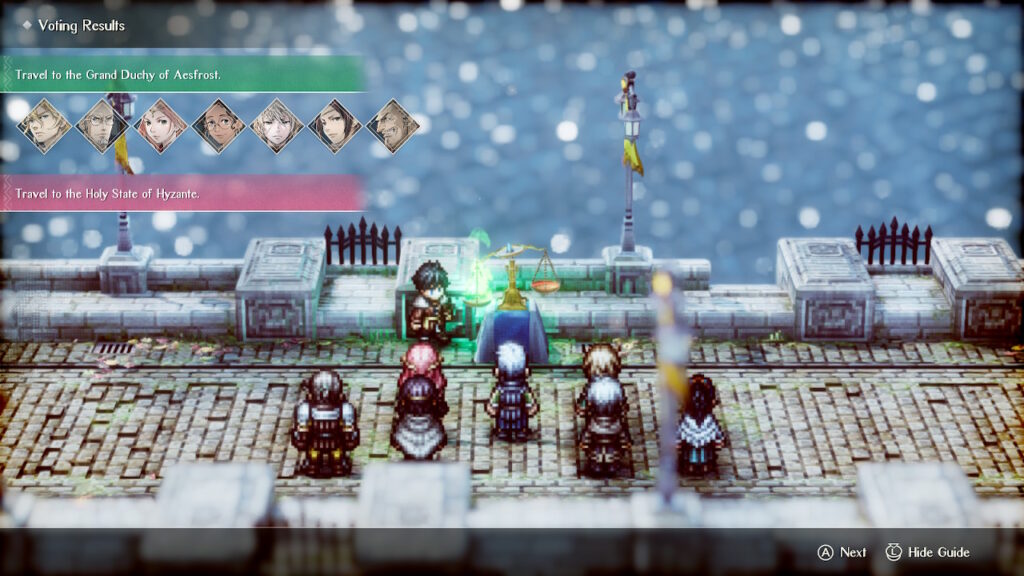
Once you get far enough, Triangle Strategy opens up and gets moving, but it takes a long time to do so and only the patient will be rewarded. Supporting storylines slowly populate the map and eventually you feel like you’re playing a game rather than sitting through a reading of a less violent George R.R. Martin novel. If you’ve stuck it out that long, the strategy sequences become increasingly challenging, the side stories are more interesting, and the unique character abilities of your followers seem more enjoyable. Sadly, many will not have the patience to really dig deeply into Triangle Strategy, especially if they’re used to more combat oriented gameplay with a bit less focus on plot details.
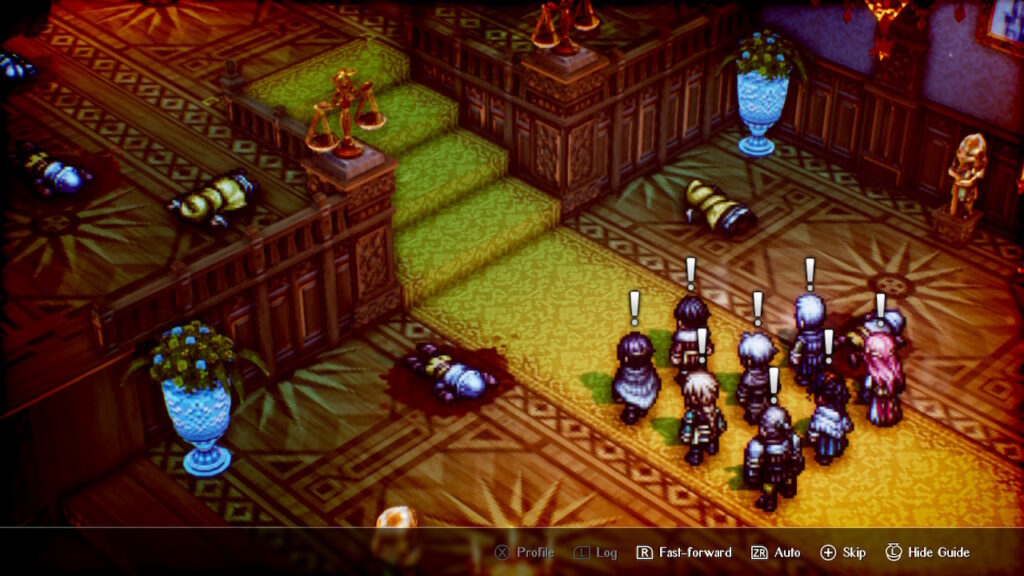
Triangle Strategy is a gorgeous game of course and the Octopath Engine (that’s what I’m calling it, ok?) really shines here. Gameplay is fluid and camera angles work great. The 3D set pieces blend well with the pixel art and the whole vibe of the game really nails that retro 16 bit feeling while still coming off as remarkably modern. The sound is also quite good and composer Akira Senju has done an excellent job creating some utterly memorable tracks that will have you humming them long after the system is turned off and the game is complete. Unfortunately, the spoken dialogue is more of a mixed bag, with weird accents, stilted and wooden readings, and inconsistent performances from most characters. With a fully voiced game, it’s important to nail the characters and some of the voice work here is unfortunately quite substandard. Not every bit is bad but there are enough odd readings to definitely make you want to read rather than just listening more than a few times.
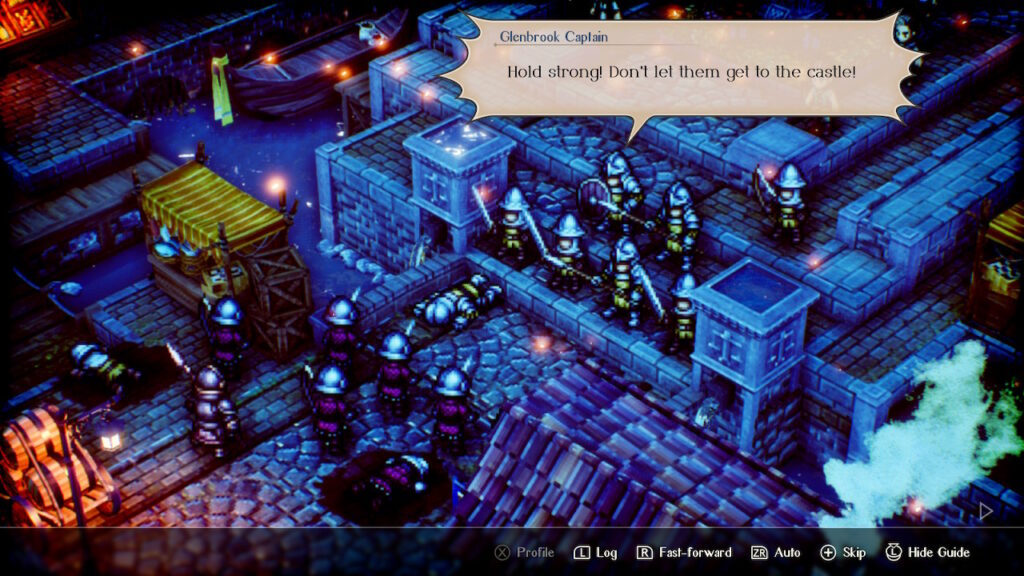
If you’re not wandering about grinding to make combat easier or sitting through every bit of spoken dialogue, you might be able to get through the game in around 30 hours. If you’re taking your sweet time or don’t have a knack for strategy, you might get a bit more mileage out of Triangle Strategy and for the AAA $60 price tag that isn’t too bad. Length aside, the main issue with Triangle Strategy is pacing and balance. Difficulty that’s a bit lower than it should be, story sequences that are much longer than they should be, and a feeling that the ambience was more of a concern than the fun factor mar what should have been a stand out release. While Triangle Strategy is still an absolutely excellent game, it also has a fair number of flaws that will turn off some players. Be aware of what you’re getting into, but if you love high fantasy, solid turn-based strategy gameplay, and clever uses for combat abilities, Triangle Strategy is certainly worth your time and cash.
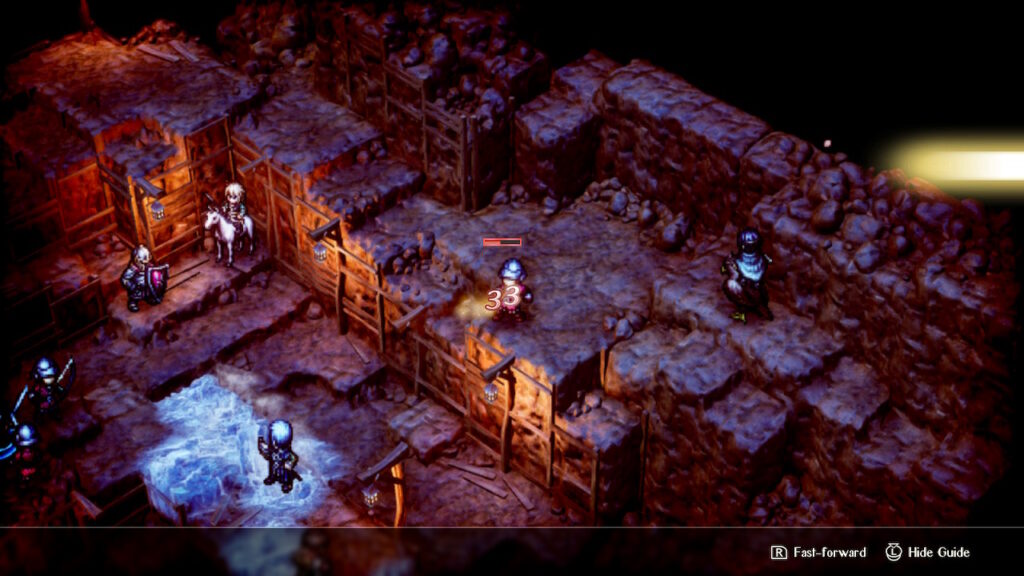
This review is based on a digital copy of Triangle Strategy provided by the publisher. It was played on a Nintendo Switch in both docked and undocked modes and was excellent in both. Triangle Strategy is a Nintendo Switch exclusive at this time.

